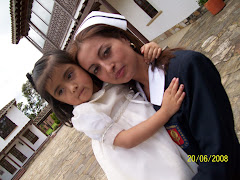
Essay
Guyana is one of the best places in the word I think. One of the traditions is in an special date, as a weddings after nine days is celebrated another vigil. Additionally, during that time no one ever gets to the family, and at home are covered mirrors for fear of seeing the dead, the houses were not barren to death not take other family members.
People are Guyana the hospital and establish a bridge of confidence. They are people open, joyous, free of prejudice.
Guyana is one of the best places in the word I think. One of the traditions is in an special date, as a weddings after nine days is celebrated another vigil. Additionally, during that time no one ever gets to the family, and at home are covered mirrors for fear of seeing the dead, the houses were not barren to death not take other family members.
People are Guyana the hospital and establish a bridge of confidence. They are people open, joyous, free of prejudice.
The best example is the tolerance regarding religion. Although the country is predominantly Catholic, plurality and respect for other religions is the predominant note.
In the Christmas feast Guyana wears and decks with their best atmosphere, time is of taste and feast, assembly and meetings of warmth and happiness. There are different cultural expressions, culinary, musical and identifying the traditional celebration of Christmas celebrations have such a large force because collectively hold countless meetings that make the Christmas festivities very special .All of these celebrations are filled with human warmth that all Christmas festivities if you have something distinctive to be a period where the family reunion, solidarity and human values take over our souls, then Venezuela becomes even more warm and gives way to deliver a period that closes to get a new one full of hopes and new dreams to realize.
On the other hand, Guyanese folklore and traditions date back centuries. Many Guyanese superstitions or belief systems are maintained among Guyanese Americans, especially those who identify with some Caribbean enclave. The following are some examples of Guyanese beliefs: Good Friday is considered a very unlucky day to be involved in outdoor activities if they are not church-related. When entering a house late at night, a person should go in backwards in order to keep evil spirits out. To cure a fever, a sliced potato should be placed on the ill person's forehead. To cure the effects of a stroke (like a twisted mouth), a whole nutmeg should be placed inside of the mouth on the affected side
Finally, to talk about interaction with other cultures Guyanese began to interact groups, particularly Jamaicans, Trinidadians, Barbadians, Grenadians, and people from other English-speaking Caribbean nations. This nurturing of Caribbeanness contributes to the resistance to marry outside of the Caribbean group. Guyanese American cultural traditions have been preserved by the religious observances of weddings, baptisms, and funerals. This country really have many things to talk about each one but there are some relevant an interesting aspects, so, you have to visit Guyana and enjoy for yourself.
http://moviles.interbusca.com/sonidos-reales/himnos-fútbol/himno-guyana_29674.html
in this link you can fin the principal music in Guyana
BY... Erica Poveda








